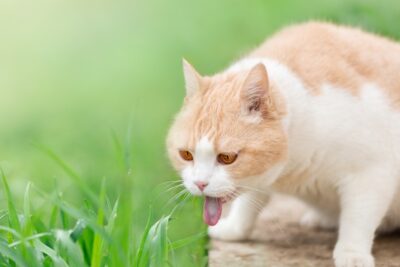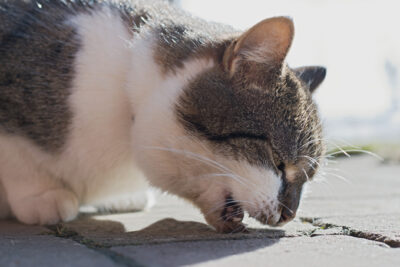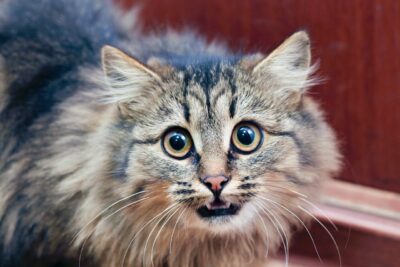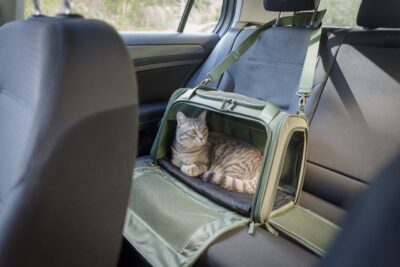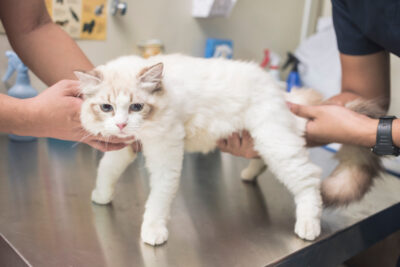Feline Infectious Peritonitis (FIP) in Cats
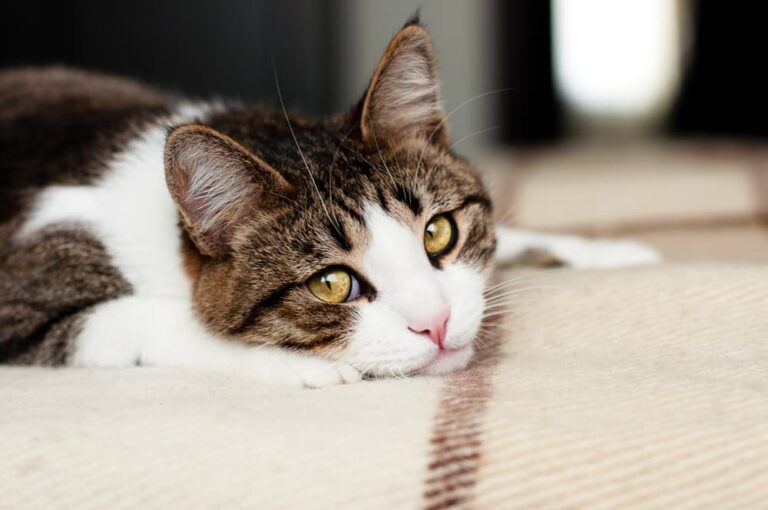
Overview
- FIP is a serious viral disease of cats and kittens. Without treatment, it is almost always fatal.
- FIP stems from the feline coronavirus. Only about 1% of cats affected by the coronavirus will develop FIP.
- FIP can be categorized as either wet or dry.
- Diagnosing FIP is difficult. There is not a single test that can confirm FIP.
- Research is ongoing to develop new treatments for FIP in cats.
Feline infectious peritonitis (FIP) is a serious viral disease of cats and kittens that affects animals throughout the world—whether feral, domesticated, small, or large.
It’s almost always fatal without treatment and affected cats go downhill very quickly with a range of vague and varied symptoms.
FIP is also an incredibly complex disease, as it is caused by the common coronavirus. This coronavirus affects about 90 percent of cats, but less than 1 percent go on to develop FIP.
There’s no effective prevention for FIP in cats, and—until recently—there was no cure. However, the compounded antiviral drug Bova GS-441524 is now the preferred first-line treatment for cats with FIP and shows great promise in treating cats with the disease.
What Is FIP in Cats?
FIP, or feline infectious peritonitis, is a disease caused by a mutated virus and an excessive immune response. Almost all cats (about 90 percent) pick up feline coronavirus at some point in their lives, usually when young, and especially if they’re living in multi-cat households or have been in a shelter.
The vast majority of cats infected with this particular coronavirus will show no symptoms of the virus at all, or may have mild diarrhea. But in a small number, the virus mutates and the cats go on to develop FIP, which causes severe illness. This means that the FIP virus in cats is not a distinct virus, and is impossible to distinguish from coronavirus in many tests.
Unfortunately, there’s no way to tell if a cat will get FIP and once a cat has the disease it is often fatal without treatment.
Symptoms of FIP in Cats

Typically, FIP causes two distinct syndromes: wet and dry. Although there is no difference in survival or treatment it does help to organize symptoms into these two groups. It’s also important to remember that cats can present with any combination of symptoms from these two groups, rather than one or the other.
Wet FIP generally causes fluid build-up in the abdomen, chest, lungs and heart. Cats with wet FIP often have abdominal swelling and may also struggle with breathing if the fluid is in the chest. They may lose their appetite and act generally depressed.
Cats with dry FIP often have less clear symptoms. They may have lethargy and weight loss, wobbliness, and breathing problems. Sometimes cats with FIP symptoms eat normally and have normal energy levels, making early diagnosis very difficult.
In the final stages of FIP, cats struggle to breathe and eat, often resulting in euthanasia.
Other symptoms of FIP in cats include:
- Abdominal swelling, often described as a pot belly
- Breathing difficulties (open-mouth panting, harsh breathing, extra effort needed to breathe, fast breathing)
- Fever
- Weight loss
- Lethargy
- Vomiting
- Diarrhea
- Jaundice
- Eye problems, including blindness, eye pain and eye color changes
- Wobbly eyes (nystagmus)
- Incoordination, wobbliness, paralysis
- Seizures
How Do Cats Get FIP?

FIP is caused by a mutation of the very common coronavirus. This means that cats don’t catch FIP, they catch the coronavirus. Although the disease is caused by a feline coronavirus, this is NOT the same coronavirus associated with COVID-19 and cannot be transmitted from people to cats or vice versa.
This coronavirus strain that can lead to FIP is very common, especially in multi-cat households. It’s spread through contact with cat poop, so it can spread between cats sharing a litter tray, exploring outside, or mutually grooming one another. It can also be passed directly from mother to kittens. The virus lives in the cells of the intestine and replicates, and usually causes no problems.
In a very small number of cats (less than 1 percent), the virus mutates while replicating, and becomes far more dangerous.
The virus begins to infect macrophages, a type of white blood cell, which means it leaves the intestine and spreads around the body. The immune system fails to properly recognize the disease and treat it, causing it to spread further. The body also sends different immune cells to the viral particles to try to get it under control, but this causes more problems.
Cats with an immature or incapable immune system—cats under the age of two or those with concurrent illnesses—seem to be more likely to develop FIP. Stressed cats are also more likely to get the disease, as stress impacts the immune system. Intact (unneutered) male cats are also more likely to be affected by FIP, possibly due to other viruses or increased roaming contact with strange cats.
Some breeds of cats are particularly susceptible, too. These breeds include:
- Abyssinians
- Bengals
- Birmans
- Himalayans
- Ragdolls
- Rexes
Diagnosis of FIP in Cats

Diagnosing FIP is difficult, and unfortunately there is no single test that can confirm FIP in a living cat. Instead, it’s a matter of collecting evidence using several different tests to rule out other diseases with similar symptoms.
Blood tests are an essential starting point, and can give your vet lots of information. They may be useful to rule out concurrent problems with the kidneys and liver as well as show changes typical of FIP such as a high white blood cell count, anemia, or changes in albumin and globulin (proteins in blood) levels.
An FELV/FIV test is also run using blood tests, as ruling these out is an important step.
Sampling any fluid in the abdomen or chest is a good idea, and where there isn’t a lot of fluid, an ultrasound may be used to look for fluid or other suspicious lesions. FIP fluid can usually be drawn from a conscious cat using a syringe.
Testing shows a high level of protein and it is usually straw-colored, so fluid that appears different can often rule out FIP. An external laboratory can test the fluid for the virus, which if positive, makes it highly likely that FIP is the correct diagnosis. Unfortunately, a negative doesn’t necessarily rule out the disease.
If a cat passes away and your vet suspects FIP, samples can be taken and sent to the laboratory to confirm the disease with 100 percent certainty.
Treatment for FIP in Cats
Until recently, the vast majority of cats with FIP were not expected to survive. Cats who are very sick when diagnosed are often euthanized to avoid further suffering.
Medications have historically been aimed at supportive treatment and easing pain and may include steroids, chemotherapy, supportive feeding, vitamin injections, and probiotics.
However, thanks to advances in antiviral therapy, there’s a new treatment for FIP in cats that may provide a cure to the once-fatal disease. In one peer-reviewed study testing the safety and efficacy of the treatment, the results were dramatic: Of the 31 cats with FIP treated, 25 survived.
Based on that research, Bova GS-441524 is now available as the first officially regulated FIP treatment for cats. This groundbreaking compounded medication is the preferred first-line treatment for cats with FIP, with many cats showing reduced symptoms within 48-72 hours.
If your cat is diagnosed with FIP, ask your veterinarian if Bova GS-441524 would be an appropriate treatment. It comes in two tasty tuna-flavored oral formulations for easy dosing — 50 mg tablets and 50 mg/mL liquid medication. Dosage varies depending on a cat’s weight and what form of FIP they have. For the best chance of recovery, cats with FIP should take the medication for a full 12 weeks.
FIP in Cats Life Expectancy
Prognosis for FIP in cats is still extremely poor. The new drugs are not widely available and may be prohibitively expensive for many years. Additionally, the vast majority of cats are extremely sick when first diagnosed, and many cannot survive long enough for the medications to work.
Many cats who are not euthanized at diagnosis will die within a few days. The majority of cats are not expected to survive for more than two or three weeks, although there are isolated cases of cats taking a combination of medications and surviving for months.
Cats who successfully respond to FIP treatment may go on to live normal lifespans. Additional research is still needed to understand the long-term impacts of FIP treatment.
Costs Associated With FIP in Cats
The costs of diagnosing and working to treat FIP in cats can quickly add up. Diagnosing FIP is likely to cost $300-$1,000 depending on the severity of the case and the number of tests needed.
Many of the drugs associated with trying to treat FIP are hard to get hold of and extremely expensive. Extended hospital stays with fluids and supportive feeding tubes may be necessary. These costs can be up to $1,000 per day.
Easing your cat’s pain and making him more comfortable at home with steroids is significantly less expensive and can be as little as $5 per day after the initial work-up costs.
How to Prevent FIP

Prevention of FIP is difficult, but it usually revolves around preventing immune-compromising disease and reducing the spread of coronavirus.
Keeping cats in relatively small, stable groups of less than five pets and ensuring there are lots of regularly disinfected litter boxes can reduce spread. If a cat does contract FIP, owners should wait at least two months before getting another pet as the virus can live for up to seven weeks in the environment.
There is a vaccination to prevent infection with coronavirus available in some countries, but this cannot be given to cats under the age of 16 weeks. Since the vast majority of cats have already contracted the virus by this age, it’s unfortunately not very effective.
